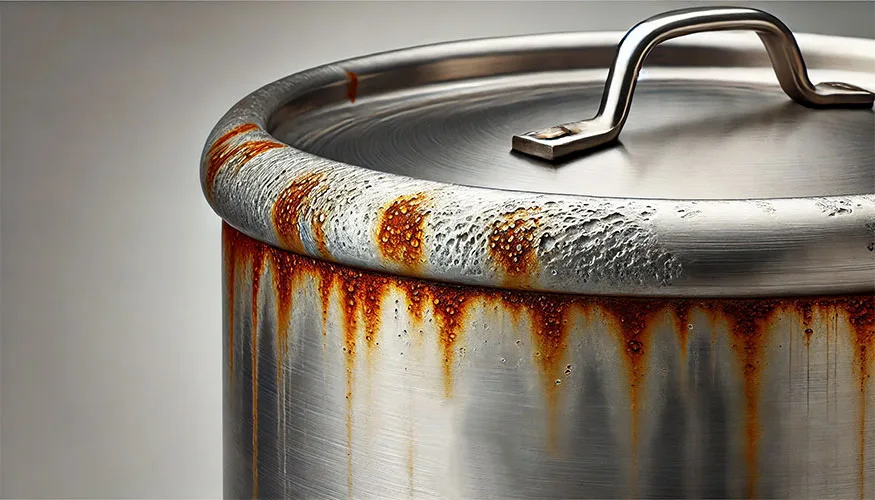201 Stainless Steel is a less-expensive option as compared to other grades of stainless steel such as 304 and 316. 201 Stainless Steel is in the 200 series of stainless steel. They are austenitic chromium-nickel-manganese alloys. This grade of steel has a high manganese content which makes it more affordable. However, it also makes it more prone to corrosion.
Why 201 Stainless Steel Is Less Resistant to Corrosion?
The composition of 201 stainless steel includes 16-18% chromium, 3.5-5.5% nickel and 5.5-7.5% manganese. This steel has less nickel and more manganese content, giving it formability and mechanical properties. However, this composition also lowers its resistance to corrosion in comparison to higher-grade stainless steel. Therefore, it is less resistant to rust and corrosion.
In Which Conditions Can 201 Stainless Steel Rust?
1. Infrequent Maintenance and Cleaning: without regular maintenance and cleaning, 201 stainless steel can become a victim of accumulated corrosive agents that can cause rust.

2. Chloride Exposure: chloride exposure can be very harmful for 201 stainless steel as it can cause localized corrosion and rusting.
3. Harsh Conditions: if 201 stainless steel is exposed to environments with pollution, acidic conditions, and high humidity, it can corrode or rust faster.
4. Mechanical Damage: damages to the surface of 201 stainless steel in the form of abrasions and scratches can destroy the protective layer and expose the steel to oxidation and subsequent rust.
5. Contact with Iron or Carbon Steel: coming in contact with iron or carbon steel particles is especially harmful to 201 stainless steel as it can lead to quick surface contamination and rust.
Preventing Rust in 201 Stainless Steel
To make the most use of 201 stainless steel, various measures can be taken:
1. Protective Coating: polymer and silicone coatings are very helpful in preserving stainless steel from corrosive elements.
2. Frequent Cleaning: regularly cleaning stainless steel surfaces with a soft cloth using mild soap and water can preserve the protective layer.
3. Avoiding Contact with Iron or Carbon Steel: 201 stainless steel should be kept away from carbon steel or iron particles to reduce risks of contamination and rusting.
4. Prompt Damage Repair: if 201 stainless steel is damaged, it should be addressed quickly so that rust does not take hold. The protective layer should be restored by taking care of scratches.
5. Environmental Safety: since 201 stainless steel is more susceptible to rust, environments with significant chloride exposure will benefit from 304 or 316 stainless steel grade as they are more resistant to chlorides.
6. Design Planning: 201 stainless steel should be designed with fewer crevices and ensure efficient drainage to reduce the chances of corrosion.
Final Word
201 Stainless Steel is a more affordable solution for various uses. However, it is more susceptible to rust as compared to 304 and 316 stainless steel. It is, essential, to understand the conditions that cause rust so that proper care and prevention can be ensured for the long-term structural integrity and visual appeal of 201 stainless steel.